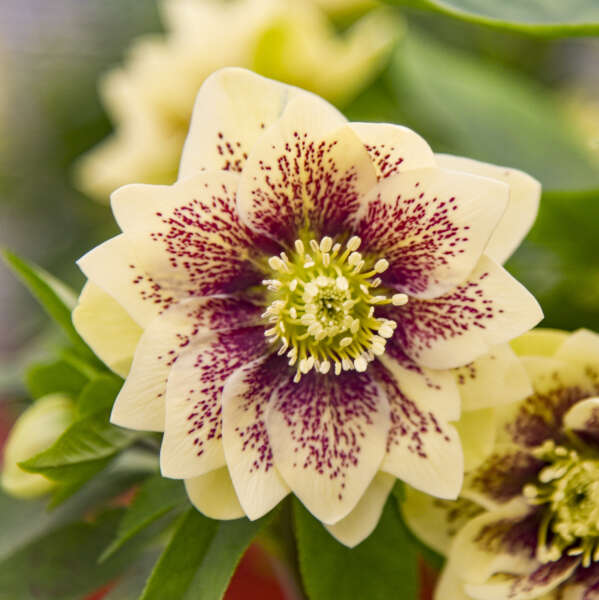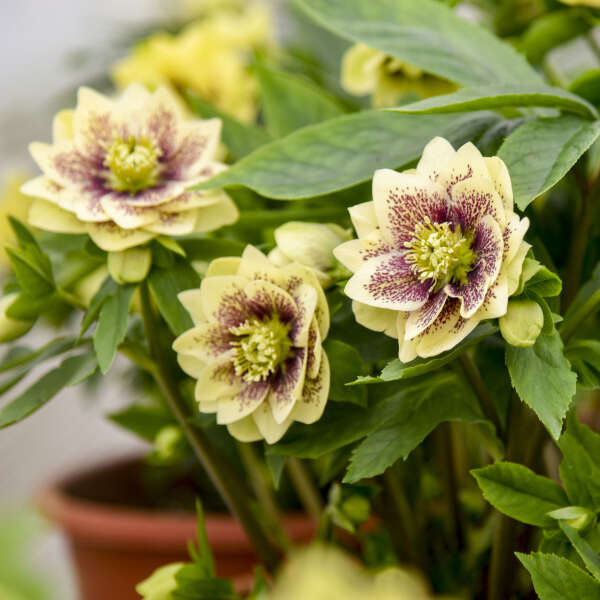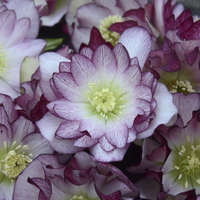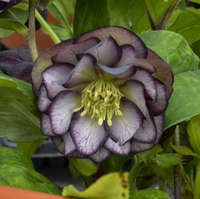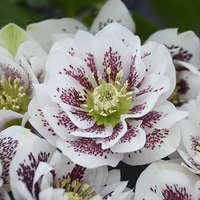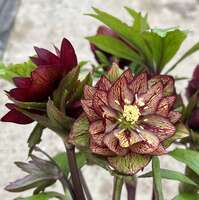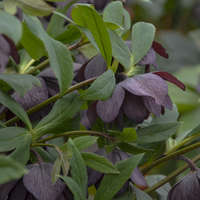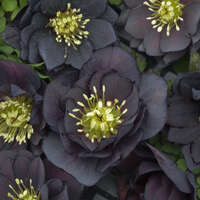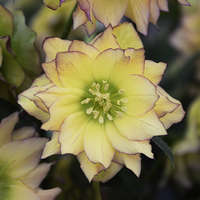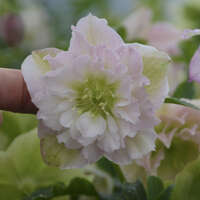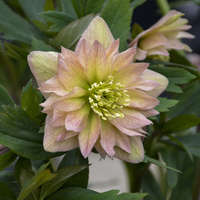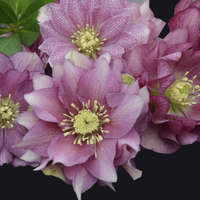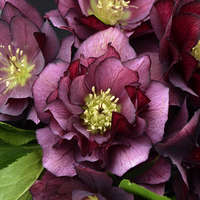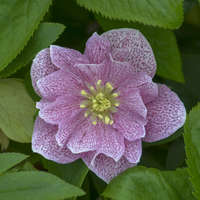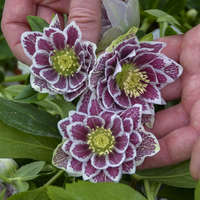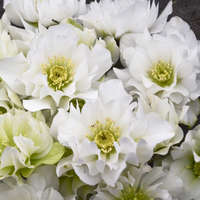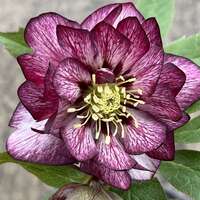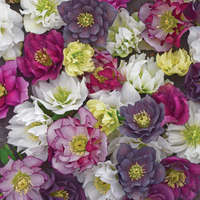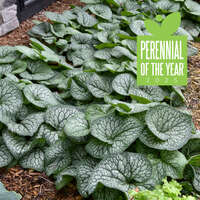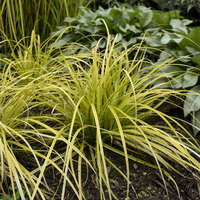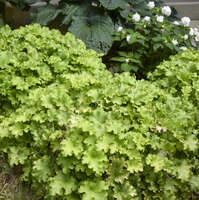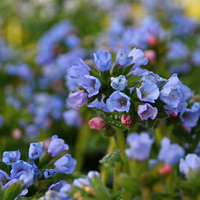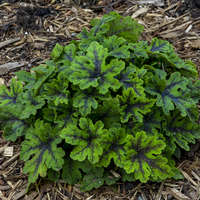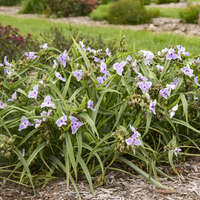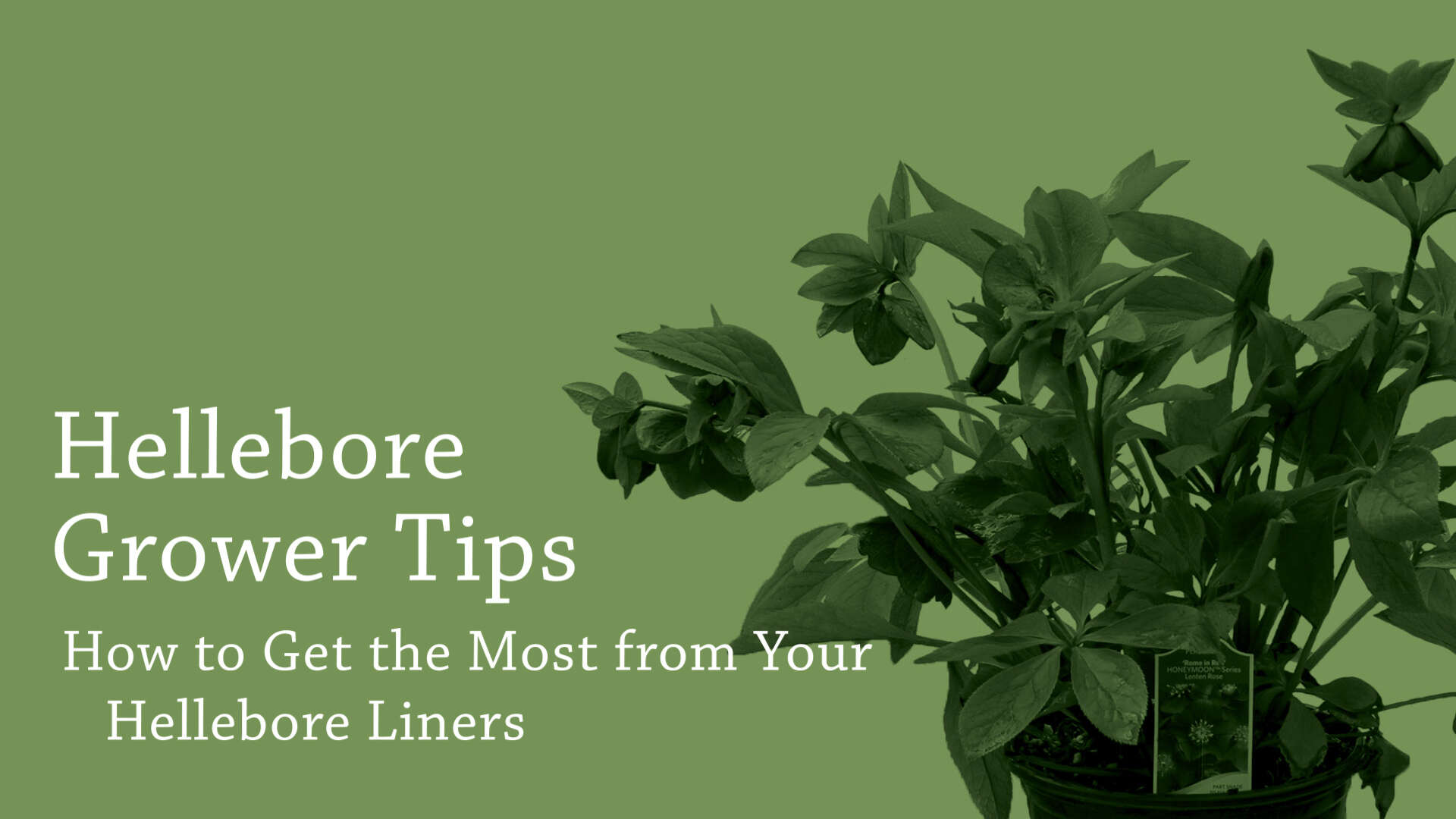Helleborus 'Father of the Bride'
WEDDING PARTY® Series


Common Name: Lenten Rose
Walters Gardens hybridizer Hans Hansen has a passion for hellebores. In his breeding work, he selects for plants with notable vigor, showy floral displays with large numbers of blossoms per plant, and rich flower colors. The WEDDING PARTY® series showcases his double flowered selections, available in numerous, beautiful color shades.
Yellow flowers are large at 2-2½" wide and fully double. A burgundy pattern appear like an eye at the center of the bloom. 'Father of the Bride' is unique among double flowering Helleborus as it flowers are predominantly side-facing.
Hellebores are the harbingers of spring, blooming for six weeks or more beginning in late winter. They are often flowering during the Christian season of Lent, from which they get their common name, Lenten Rose. This is the perfect plant for naturalizing in moist, woodland areas where its extensive root system will spread as far as it is allowed.
